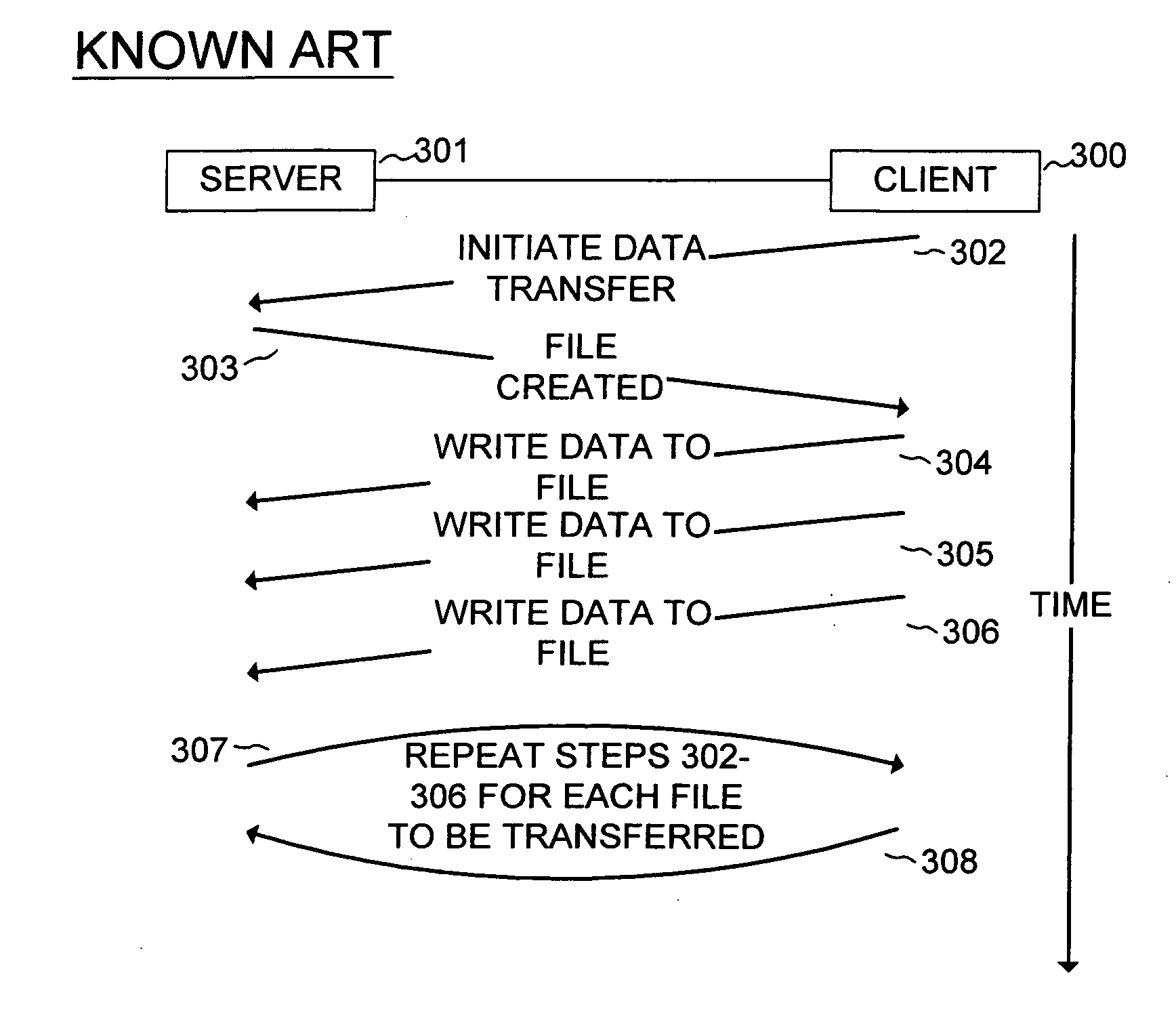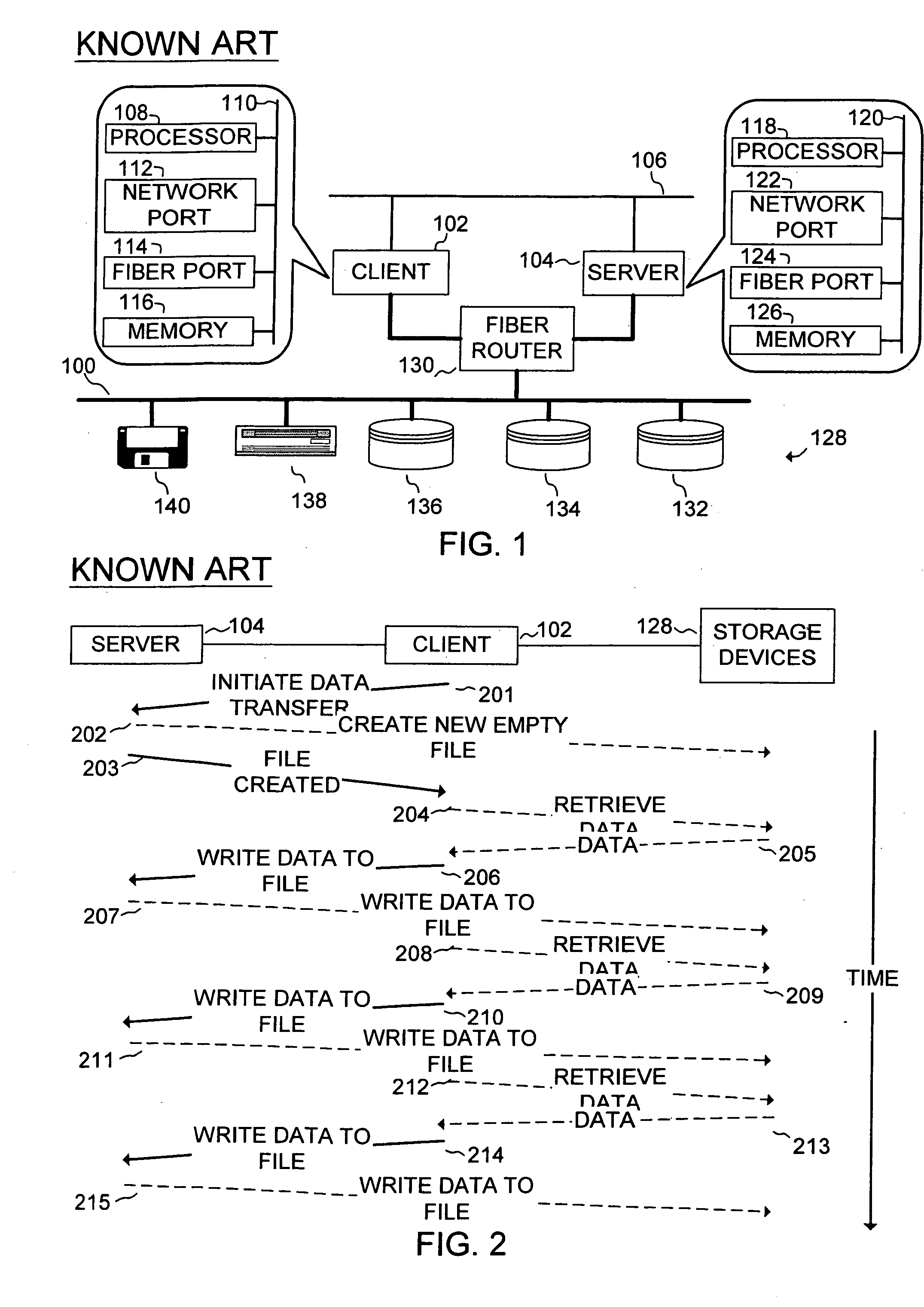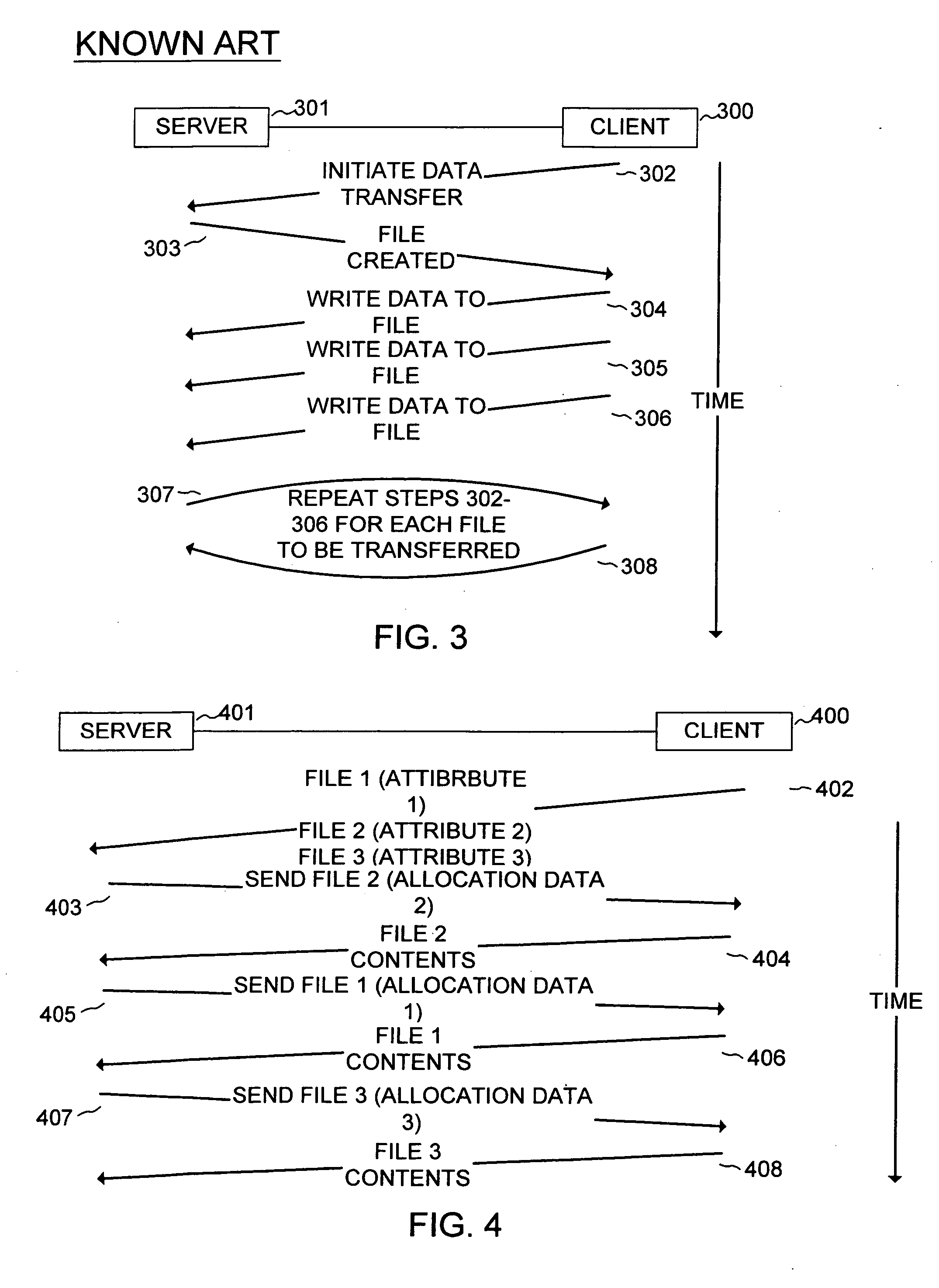Network file sharing method and system
a network file and network technology, applied in the field of storage area networks, can solve the problems of inefficient file transfer between the two systems, server inability to optimize the storage of data, and inefficient utilization of available disk spa
- Summary
- Abstract
- Description
- Claims
- Application Information
AI Technical Summary
Benefits of technology
Problems solved by technology
Method used
Image
Examples
Embodiment Construction
[0032] As described above, the problems associated with conventional file transfer methods stems from the fact that the transfer is initiated from the client. As a result, too little information is available to efficiently place the files in storage media managed by the server system. Another problem with conventional file transfer methods is that too little information is available to make proper use of the so-called “third-party copy” feature of storage area networks. In the third-party copy scenario, the client and server need to identify the data blocks to be transferred from one system to the other. This information must then be provided to a third party, which issues the corresponding storage are network I / O operations effect the movement data. In order to write data from the client to the server, the party initiating the third-party copy must be aware of the locations (block addresses) of data on both the client and server. When write operations are performed piecemeal, initi...
PUM
 Login to View More
Login to View More Abstract
Description
Claims
Application Information
 Login to View More
Login to View More - R&D
- Intellectual Property
- Life Sciences
- Materials
- Tech Scout
- Unparalleled Data Quality
- Higher Quality Content
- 60% Fewer Hallucinations
Browse by: Latest US Patents, China's latest patents, Technical Efficacy Thesaurus, Application Domain, Technology Topic, Popular Technical Reports.
© 2025 PatSnap. All rights reserved.Legal|Privacy policy|Modern Slavery Act Transparency Statement|Sitemap|About US| Contact US: help@patsnap.com



